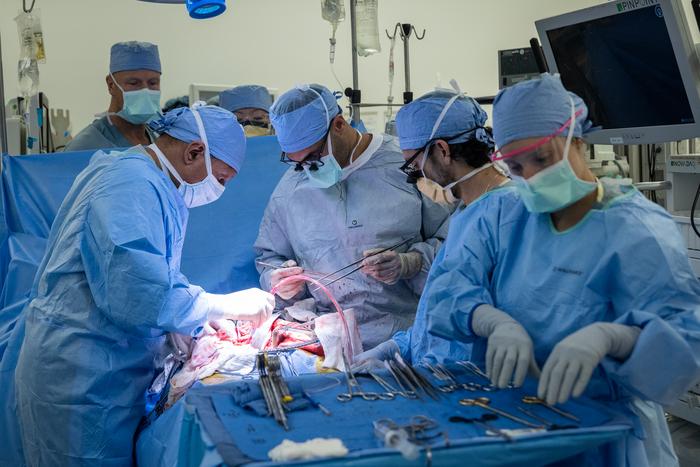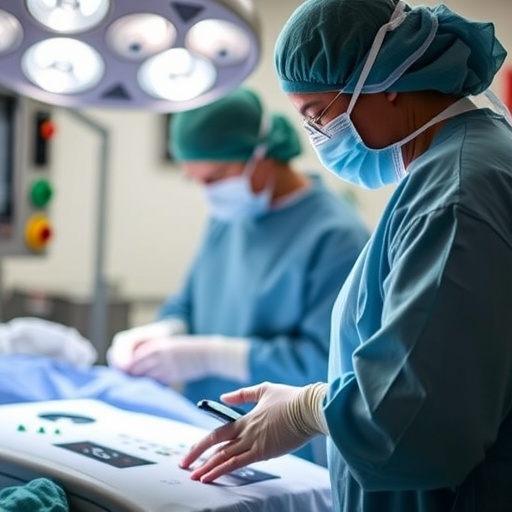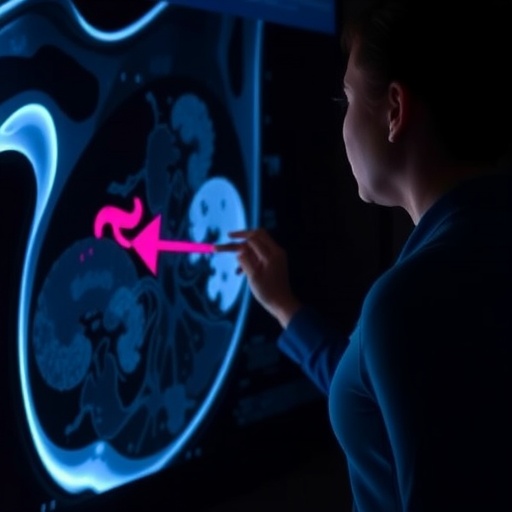In a groundbreaking advancement in transplant medicine, surgeons at Ronald Reagan UCLA Medical Center successfully performed the world’s first-ever human bladder transplant. This unprecedented surgery, completed on May 4, 2025, marks a pivotal step in urologic transplantation and offers new hope to patients suffering from terminal bladder conditions previously deemed untreatable with conventional methods. The procedure was the result of a collaborative effort between two leading institutions: Keck Medicine of USC and UCLA Health. Dr. Inderbir Gill, founding executive director of USC Urology, and Dr. Nima Nassiri, director of the UCLA Vascularized Composite Bladder Allograft Transplant Program, spearheaded the operation, which could revolutionize the treatment paradigm for bladder dysfunction worldwide.
Bladder transplantation represents an extraordinary surgical challenge due to the intricate vascular and neural connections required to restore normal urinary function. Unlike other organ transplants, the bladder’s complex pelvic vascular anatomy and its integration with the urinary tract demand a highly precise and technically sophisticated approach. Drs. Gill and Nassiri dedicated over four years to refining surgical techniques, designing clinical protocols, and navigating rigorous regulatory pathways necessary to bring this concept from the experimental phase to clinical reality. This milestone embodies meticulous preclinical experimentation, including robotic bladder recoveries and transplant simulations completed with donor organs maintained on ventilator support, all essential steps ensuring the procedure’s safety and feasibility.
The patient who underwent this pioneering transplant had endured severe medical hardships, including years of dialysis dependence following kidney removal due to renal cancer and a significantly compromised bladder that had been surgically resected due to cancer five years prior. These multiple comorbidities culminated in a condition where the native bladder was effectively nonfunctional, causing debilitating symptoms and severely diminished quality of life. The surgical team opted for a combined kidney and bladder transplant, a strategy that allowed immediate discontinuation of dialysis by restoring renal function alongside newly introduced bladder functionality, a feat never before accomplished in clinical medicine.
Immediate postoperative outcomes have been promising. The newly transplanted kidney began producing significant volumes of urine without delay, and the bladder functioned effectively as a reservoir, allowing urine drainage without obstruction or reflux. This immediate restoration of normal urinary and renal function contrasts sharply with conventional alternatives, such as intestinal bladder augmentation or diversion, which are often accompanied by long-term complications including recurrent infections and progressive kidney damage. The surgical team reported no need for dialysis post-transplant, highlighting a critical improvement in patient management and prognosis.
Bladder transplantation could herald a new era in treating patients with ‘terminal’ bladder disease—a condition where the bladder is irreparably damaged or removed due to malignancy, trauma, or chronic infection. Traditional reconstructive techniques primarily utilize segments of intestine to fabricate urinary reservoirs or conduits, yet these approaches introduce numerous risks and significantly impact quality of life. The anatomical and physiological differences between intestinal tissue and native bladder tissue often result in complications ranging from metabolic disturbances to severe infections. By transplanting a vascularized bladder graft, surgeons aim to provide patients with a urinary reservoir that more closely mimics natural bladder physiology, potentially mitigating many adverse side effects.
Nevertheless, organ transplantation inherently carries risks related to immunological rejection and the adverse effects of lifelong immunosuppressive therapy. These medications, essential to preventing graft rejection, increase vulnerability to infections and may induce other systemic complications. Given these factors, current candidates for bladder transplantation are carefully selected, primarily focusing on individuals already requiring immunosuppression due to concomitant organ transplants, such as kidney transplants. This combined transplant approach not only optimizes patient outcomes but also justifies the immunosuppressive protocol necessary for graft survival.
The development of bladder transplantation surgery demanded an extensive foundation of research and collaboration across multiple disciplines. The surgical teams at USC and UCLA meticulously planned and conducted preclinical trials involving robotic-assisted bladder harvests and transplantations in deceased donors with maintained cardiac activity under ventilator support. These experimental transplants were fundamental in refining surgical techniques, understanding the complex pelvic microvascular anatomy involved, and ensuring the procedure’s reproducibility and safety before entering human trials. The partnership with OneLegacy, Southern California’s organ procurement organization, was equally critical, facilitating organ recovery and laying the groundwork for future transplants.
The procedure was carefully integrated within a UCLA-led clinical trial designed to systematically evaluate the safety, feasibility, and long-term outcomes of bladder transplantation. This trial represents a significant step forward in addressing a previously unmet clinical need. Drs. Gill and Nassiri envision expanding the application of bladder transplantation, potentially transforming the clinical management of patients with severe bladder dysfunction and providing a template for future composite organ transplants incorporating urologic components.
Beyond the immediate surgical success, the achievements of USC Urology and UCLA Urology in this domain reflect broader advancements in the field. USCUrology, under Dr. Gill’s leadership, has attained global recognition for innovative robotic surgical oncology techniques and the incorporation of machine learning and artificial intelligence to enhance patient care and outcomes. Simultaneously, UCLA Urology maintains a pioneering role in organ transplantation research, with robust programs in kidney transplantation now expanded to include bladder grafts. These institutional strengths combined have facilitated the translation of complex laboratory investigations into clinical practice.
While the initial success is cause for optimism, many unknowns remain regarding the long-term function of transplanted bladders, the optimal immunosuppressive regimens required, and how patients will adapt physiologically and psychologically over time. Future research efforts will be essential to assess graft durability, rates of rejection, infection, and overall quality of life. Nevertheless, this milestone surgery presents a new horizon for the treatment of urologic diseases, offering tangible hope for thousands who previously had limited options beyond palliative care or invasive surgical reconstruction.
Ultimately, this landmark procedure symbolizes the extraordinary potential of modern transplant surgery, combining cutting-edge robotic techniques, molecular insights, and multidisciplinary collaboration to push the boundaries of what is surgically achievable. By restoring natural organ function in cases once deemed impossible, the world’s first human bladder transplant not only rewrites medical history but also sets a precedent for future innovations in organ transplantation and regenerative medicine.
Subject of Research: First-in-human bladder transplant in combination with kidney transplant
Article Title: (Not explicitly provided in source content)
News Publication Date: May 4, 2025
Web References:
Keck Medicine of USC Urology: https://www.keckmedicine.org/services/urology/
UCLA Health Vascularized Composite Bladder Allograft Transplant Program: https://www.uclahealth.org/providers/nima-nassiri
Clinical trial: https://www.clinicaltrials.gov/study/NCT06337942
Pre-transplant press release: https://news.keckmedicine.org/urologists-to-perform-worlds-first-bladder-transplant/
References: Not provided
Image Credits: Photo courtesy of Nick Carranza, UCLA Health
Keywords: Transplantation, Organ transplantation, Bladder transplantation, Kidney transplantation, Urology, Robotic surgery, Immunosuppression, Regenerative medicine
Tags: bladder dysfunction treatmentclinical protocols for organ transplantcomplex surgical techniquesgroundbreaking transplant surgeryhuman bladder transplantinnovative medical procedurespreclinical experimentation in surgerysurgical challenges in bladder transplantationterminal bladder conditionstransplant medicine breakthroughsurologic transplantation advancementsUSC UCLA collaboration





